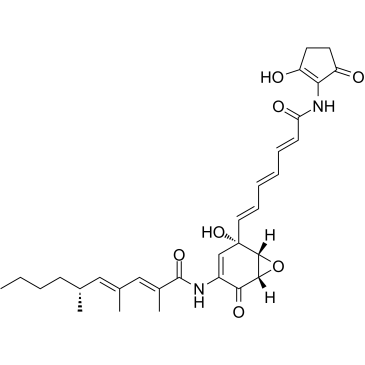Genome-wide screen for modulation of hepatic apolipoprotein A-I (ApoA-I) secretion.
Rebecca R Miles, William Perry, Joseph V Haas, Marian K Mosior, Mathias N'Cho, Jian W J Wang, Peng Yu, John Calley, Yong Yue, Quincy Carter, Bomie Han, Patricia Foxworthy, Mark C Kowala, Timothy P Ryan, Patricia J Solenberg, Laura F Michael
Index: J. Biol. Chem. 288(9) , 6386-96, (2013)
Full Text: HTML
Abstract
Control of plasma cholesterol levels is a major therapeutic strategy for management of coronary artery disease (CAD). Although reducing LDL cholesterol (LDL-c) levels decreases morbidity and mortality, this therapeutic intervention only translates into a 25-40% reduction in cardiovascular events. Epidemiological studies have shown that a high LDL-c level is not the only risk factor for CAD; low HDL cholesterol (HDL-c) is an independent risk factor for CAD. Apolipoprotein A-I (ApoA-I) is the major protein component of HDL-c that mediates reverse cholesterol transport from tissues to the liver for excretion. Therefore, increasing ApoA-I levels is an attractive strategy for HDL-c elevation. Using genome-wide siRNA screening, targets that regulate hepatocyte ApoA-I secretion were identified through transfection of 21,789 siRNAs into hepatocytes whereby cell supernatants were assayed for ApoA-I. Approximately 800 genes were identified and triaged using a convergence of information, including genetic associations with HDL-c levels, tissue-specific gene expression, druggability assessments, and pathway analysis. Fifty-nine genes were selected for reconfirmation; 40 genes were confirmed. Here we describe the siRNA screening strategy, assay implementation and validation, data triaging, and example genes of interest. The genes of interest include known and novel genes encoding secreted enzymes, proteases, G-protein-coupled receptors, metabolic enzymes, ion transporters, and proteins of unknown function. Repression of farnesyltransferase (FNTA) by siRNA and the enzyme inhibitor manumycin A caused elevation of ApoA-I secretion from hepatocytes and from transgenic mice expressing hApoA-I and cholesterol ester transfer protein transgenes. In total, this work underscores the power of functional genetic assessment to identify new therapeutic targets.
Related Compounds
| Structure | Name/CAS No. | Molecular Formula | Articles |
|---|---|---|---|
 |
Manumycin A
CAS:52665-74-4 |
C31H38N2O7 |
|
Statins inhibit protein lipidation and induce the unfolded p...
2009-10-27 [Proc. Natl. Acad. Sci. U. S. A. 106(43) , 18285-90, (2009)] |
|
[Effects of manumycin combined with methoxyamine on apoptosi...
[Chin. J. Cancer 27(8) , 835-9, (2008)] |
|
Polygonatum cyrtonema lectin induces murine fibrosarcoma L92...
2010-12-01 [Biochimie 92(12) , 1934-8, (2010)] |
|
Plumbagin activates ERK1/2 and Akt via superoxide, Src and P...
2010-07-25 [Eur. J. Pharmacol. 638(1-3) , 21-8, (2010)] |
|
Farnesyltransferase inhibitors reduce Ras activation and ame...
2009-11-01 [Hepatology 50(5) , 1547-57, (2009)] |